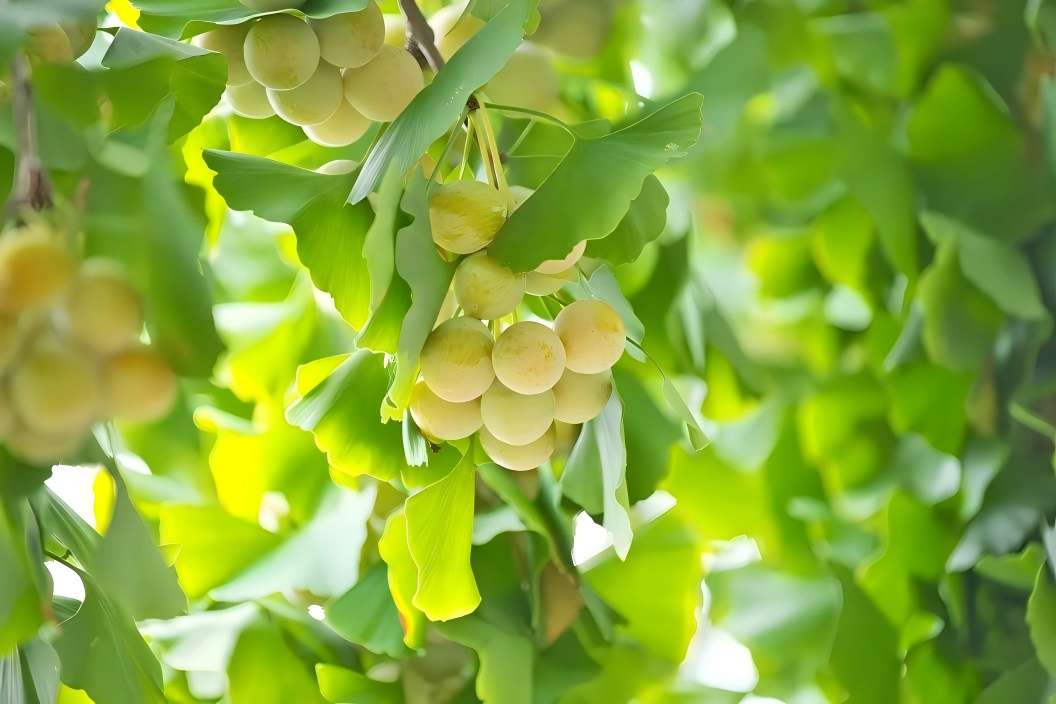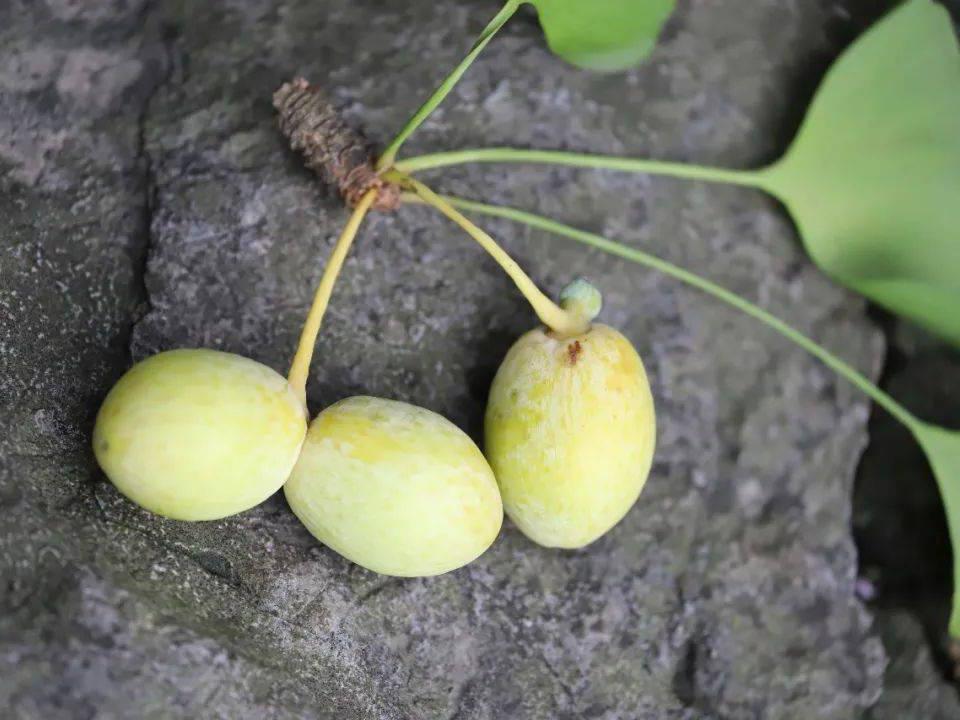Study on Ginkgo Biloba and Ginkgo Biloba Drug Toxicity Evaluation
Ginkgo (Ginkgo biloba L.) is a gymnosperm plant in a single family, genus and species. It is the oldest relict plant and is known as the “living fossil of the plant world”. Ginkgo is native to China, accounting for more than 70% of the world's resources, and is mainly distributed in more than 20 provinces (autonomous regions and municipalities directly under the central government). People's attention to the medicinal use of ginkgo began with the modern research on ginkgo preparations in Germany and other European countries in the 1950s. Currently, most ginkgo preparations on the domestic and international markets are single-herb preparations.
The quality control and evaluation of medicinal materials, extract intermediates and preparations still refer to the international general standard of EGb761. This has resulted in a single-minded Western-medicine mindset when it comes to ginkgo preparations, with the primary focus being on the safety risks and adverse reactions caused by toxic ingredients while clearly identifying the known efficacy. As a result, in recent years, there has been increasing domestic concern about the toxic side effects of ginkgo preparations and safety limit checks on toxic ingredients, with the non-toxicity and harmlessness of ginkgo products being used as an important indicator of quality improvement. Little is known that in China, ginkgo biloba and Ginkgo biloba have been used medicinally for more than 800 years. Their properties and functions, processing to reduce toxicity, usage and dosage, etc., are all in line with the records of traditional Chinese medicine theory and are still used today.
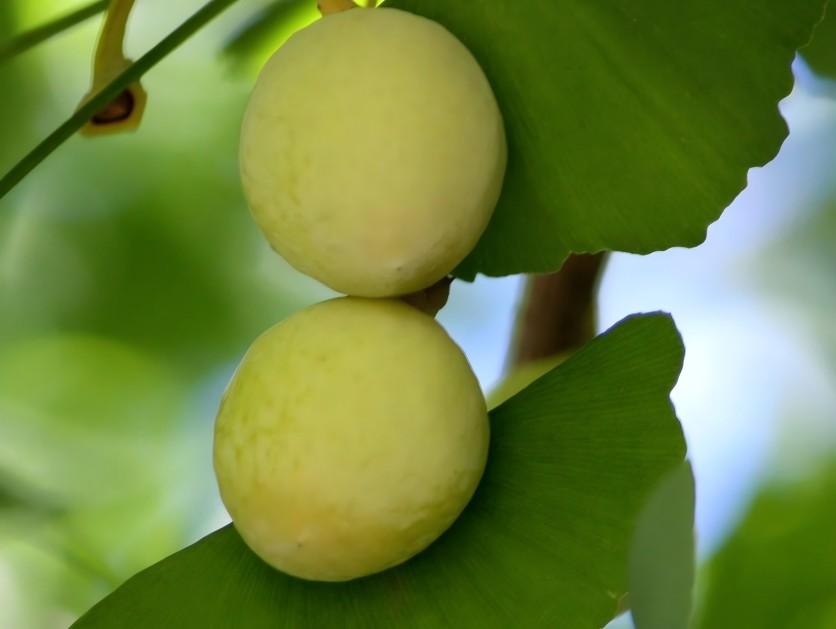
With the continuous progress of modern science in promoting the research of traditional Chinese medicine, we should treat ginkgo preparations as natural herbal medicines, correctly understand the complexity of their multiple ingredients, multiple effects and multiple targets, scientifically explain their material basis, chemical composition and toxicological activity mechanism, and then establish reasonable quality control and safety evaluation methods. Therefore, this paper summarizes the development of ginkgo biloba medicine from three aspects: the medicinal history of ginkgo biloba in ancient China, the development history of the ginkgo biloba industry at home and abroad in modern times, and the evaluation of the toxicity and side effects of ginkgo biloba preparations. It is hoped that this paper will provide a reference for further research and development of the medicinal value of ginkgo biloba by tracing the origin of this highly viable star traditional Chinese medicine variety at home and abroad.
1 The medicinal history of ginkgo biloba in ancient China
Ginkgo began to be used as a medicinal herb in the early Tang Dynasty. The earliest ancient book to record the medicinal value of ginkgo was “Shu Mu Ben Cao” (Food Materia Medica) written by Li Gao at the beginning of the Yuan Dynasty (published in 1259 AD).
By collating the ancient books on the medicinal use of ginkgo, it is found that from the Ming and Qing Dynasties onwards, and even in the following centuries, as the clinical use of ginkgo became more widespread, the ancient doctors' records on its toxicity became clearer and more specific.
2 History of the development of the modern foreign ginkgo industry
In 1690, Kaempfer made a botanical description and record of the ginkgo tree while observing it in Japan, and was the first to propose the name “Ginkgo” (“Ginkgo” is the homophonic pronunciation of the Chinese word for “golden fruit”, referring to the golden yellow seeds). He became the first European botanist to study ginkgo, but it was more than 430 years later than the first record of ginkgo in China [1]. In 1771, Linnaeus named the species Ginkgo biloba based on the characteristic of the leaves being deeply bifid. In 1896, Professor Ichiro Ike and his assistant from Tokyo Imperial University in Japan were the first to discover that the ginkgo fruit contains sperm, becoming the first people in the world to discover the sperm of gymnosperms. This discovery shocked the plant world at the time, and since then the species Ginkgo biloba has been separated from the Taxaceae family and become an independent genus and species [2-4].
In the 1960s, Japanese Professor Nakanishi Kaoru first discovered the structure of ginkgolide, and was the first person to isolate ginkgolide from the root bark of Ginkgo biloba. Subsequent experiments have proven that the terpene lactone components in Ginkgo biloba have important pharmacological activities. Subsequently, Dr. Willamar Schwabe Gmbh & CO. KG in Germany developed Ginkgo biloba extract (EGb761), which has the effect of opening blood vessels and lowering cholesterol, and is effective against cardiovascular and cerebrovascular diseases and neurological diseases. Since then, research and development of ginkgo preparations has become a craze abroad [5]. The French pharmaceutical company's ginkgo biloba preparation is sold under the brand name Tanakan, while the German pharmaceutical company Schwabe's ginkgo biloba preparation is sold under the brand name Tebonin. Subsequently, the Ginaton injection and tablet were launched. Since 1975, the annual sales of ginkgo biloba preparations abroad have reached 60 million US dollars [6].
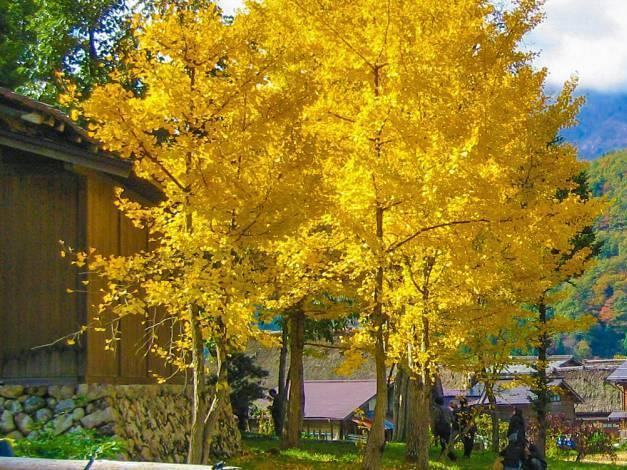
Most ginkgo preparations are single-herb preparations made from ginkgo leaf extract. They have the effects of dilating blood vessels, regulating blood lipids, and improving microcirculation. They have significant therapeutic effects on cardiovascular and cerebrovascular diseases. Currently, ginkgo preparations are used in more than 100 countries around the world [7]. In 1991, the Schwabe pharmaceutical factory patented the production of a ginkgo leaf extract called EGb761. The quality indicators it proposed were: flavonoids: more than 24%; terpenoid lactones: more than 6%; ginkgolic acids: less than 10 ppm (i.e. 10×10-6%).
During this period, it has been confirmed by research that ginkgo acid contained in ginkgo is toxic, causing allergies and mutations, and is the main component causing adverse clinical reactions. Therefore, the limit of ginkgo acid is one of the key indicators for evaluating the quality of ginkgo preparations [8-10]. In view of this, in 1997, the German Ministry of Health already proposed that the level of ginkgo acid in ginkgo leaf preparations be strictly limited to less than 5×10-6. The Pharmacopoeia of the People's Republic of China (2020 Edition) (hereinafter referred to as the “Chinese Pharmacopoeia (2020 Edition)” also limits the content of ginkgoic acid in ginkgo leaf extract to less than 5× 10-6.
3 History of the development of the domestic ginkgo industry in modern times
Although China has the longest history of using ginkgo biloba for medicinal purposes, the development and utilization of modern ginkgo preparations lagged behind Germany. In the late 1960s, the Institute of Botany of the Chinese Academy of Sciences cooperated with the Beijing Pharmaceutical Factory to conduct research on ginkgo preparations in 1969, producing injections and oral tablets named “6911” and “Guanxinketong” respectively. Due to historical constraints at the time, the depth of research on ginkgo biloba was far from sufficient. The ginkgo biloba preparations produced had many impurities and significant side effects, and related follow-up research was stagnant for more than 20 years. As interest in the medicinal value of ginkgo biloba leaves gradually increased at home and abroad, by the 1990s there were already more than 70 manufacturers of ginkgo biloba leaf extracts in China, with more than 40 types of ginkgo biloba preparations. However, at the same time, there were problems with the production of ginkgo products in China, such as small scale, outdated equipment, and weak technical capabilities. The production processes of preparations were inconsistent, and there were also differences in quality control indicators, which directly led to large differences in product quality, clinical efficacy, and adverse reactions [11].
Unfortunately, the quality standard most commonly referenced in China's ginkgo industry is still the internationally accepted standard for ginkgo biloba extract EGb761. Quality control indicators also focus solely on the “flavonoids 24% + lactones 6%” golden ratio and the control of ginkgoic acid below 5 × 10-6 [12]. As a result, some domestic manufacturers believe that ginkgo acid is the key indicator for evaluating the quality of ginkgo, blindly pursuing the lowest possible content, while ignoring the impact of the production process on the active ingredients. In recent years, some scholars have referred to foreign research on ginkgo biloba and believe that, like ginkgo acid, the flavonoids and proanthocyanidins in it are also toxic ingredients, and that the content in extracts and preparations needs to be limited [12].
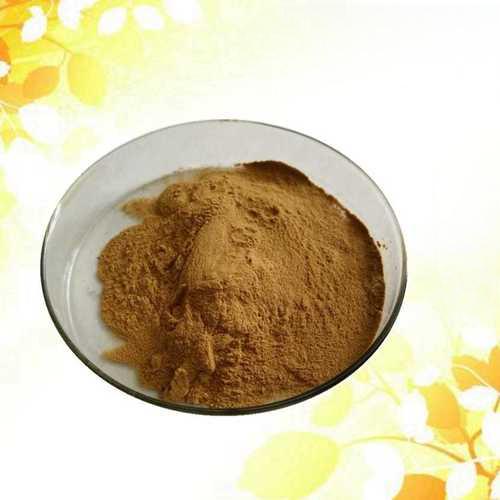
Looking at the development of China's modern ginkgo industry, it has been restricted by foreign patent protection barriers such as production technology, and there has been a lack of basic research on the originality of the species itself. As a result, ginkgo products have mostly remained at the low-end stage of repetition and imitation, making it difficult to establish a unique standardized system for the quality control and evaluation of ginkgo preparations in China [13].
4 Evaluation of ingredients related to adverse reactions of ginkgo preparations
The toxic side effects of ginkgo and ginkgo preparations are currently focused on the allergenicity of ginkgoic acid. Both domestically and abroad, its content is limited to less than 5×10-6. Ginkgo biloba contains ginkgo toxins, but because the content is lower than that of preparations made from ginkgo leaves, it has not attracted widespread attention. In recent years, some scholars have begun to pay attention to the ginkgo biloba flavonoid components, believing that they are allergenic and hepatotoxic. Since they are removed together with ginkgoic acid during the ginkgo leaf extraction process, it is recommended that a limit be established.
4.1 Main toxic components
4.1.1 Phenolic acid components
A class of alkylphenolic acids are present in ginkgo leaves, fruits and outer seed coats. The outer seed coats contain the highest levels, accounting for about 3% to 4%, while ginkgo leaves contain about 1% to 2%. These ingredients are allergenic and have mutagenic toxicity. Since the isolation of ginkgolides in 1997, the chemical composition of ginkgo biloba has gradually become clearer, and research reports on its biological activity and toxicity have also emerged [14-15]. Alkylphenolic acids are mainly composed of ginkgolic acid, ginkgetin, ginkgetinolide, and hydroxyginkgetin. Ginkgo biloba also contains lacquer phenol and isolariciresinol. Ginkgoic acid is a 6-alkyl or 6-alkenyl derivative of salicylic acid.
The side chain carbon atoms at the 6 position of the benzene ring range from 13 to 19, and the number of double bonds in the side chain ranges from 0 to 3. Ginkgoic acid components account for about 90% of total phenolic acids and are the main components. Ginkgol, which is obtained by removing the carboxyl group from ginkgolic acid, is a 3-alkylphenol compound. Bilobol is a 5-alkylresorcinol compound, also known as hydrobilobol [16-17]. A summary of research shows that the alkylphenolic acids in ginkgo leaves, ginkgo nuts and the outer seed coat are mainly composed of ginkgolic acid (C13:0), hydroginkgolic acid (C15:0), ginkgolic acid (C15:1), ginkgolic acid (C17:1), ginkgolic acid (C17:2), ginkgol, ginkgetin, ginkgolides, ginkgolic acids, hydroxyginkgolic acids, lacides, isoracides and other compounds. The specific structure is shown in Figure 1.
There are many methods for determining the content of ginkgoic acid, and most of them currently use high-performance liquid chromatography [18-21]. Comparing the current limit test methods for ginkgo acid under the ginkgo leaf extract in the Chinese Pharmacopoeia (2020 Edition), European Pharmacopoeia (EP11.0) and United States Pharmacopoeia (USP-NF2023) (see Table 1), it is found that the main parameters in each method (including the extraction solvent in the pre-treatment, the mobile phase in the chromatographic conditions, detection wavelength and stationary phase, quantitative index, calculation method, etc.) are not the same.
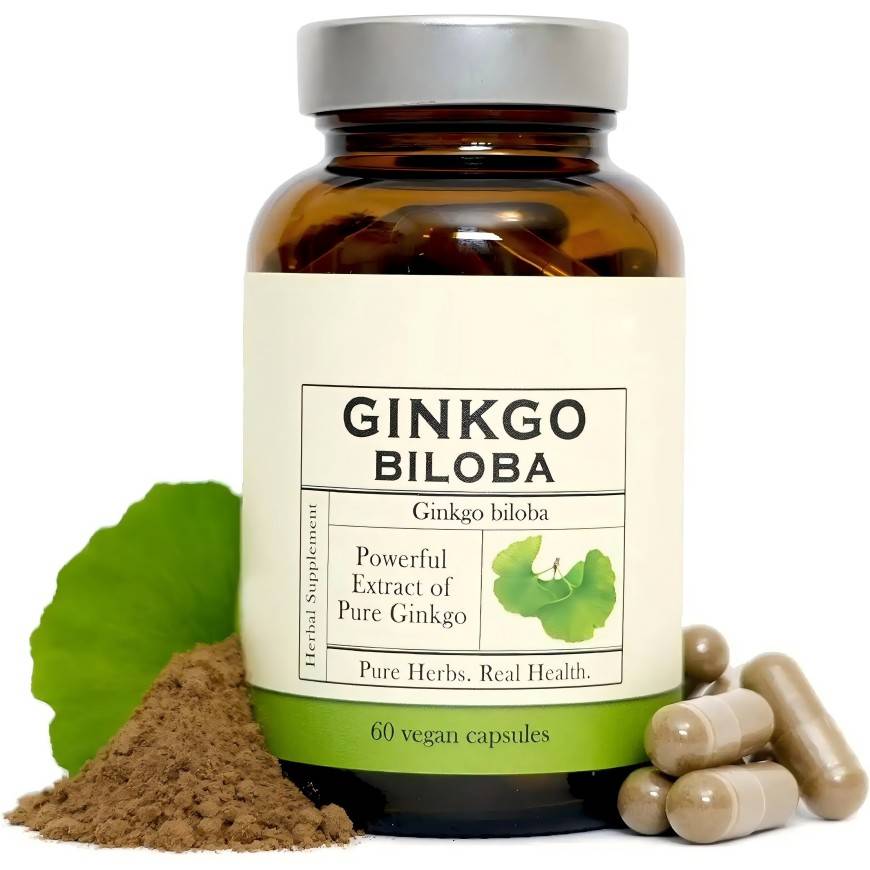
It has been reported [22] that the content of ginkgoic acid in the same batch of ginkgo leaf extract was measured according to the determination methods of the Chinese Pharmacopoeia (2020 Edition) and the European Pharmacopoeia (EP11.0), respectively. It was found that the content of the two methods differed by several times. It can be seen that the problem lies not in the sample but in the analytical method. It is meaningless to evaluate the same limit using different detection methods. The limit for ginkgoic acid content must not be higher than 5×10-6, which is the lowest content that can be detected by liquid chromatography. Therefore, it is recommended that the method for measuring ginkgoic acid content be optimized and unified, and a more scientific and reasonable detection method be established, so that the composition to be tested is completely extracted, the analysis conditions are accurate, and the calculation method is free of bias. On this basis, reasonable limit requirements can be formulated.
The alkylphenolic acid in ginkgo is mainly ginkgoic acid, which is a toxic ingredient recognized both domestically and internationally. It has allergenic, mutagenic effects and strong cytotoxicity, and can cause adverse reactions such as allergies, spasms and nerve paralysis [23-25]. As ginkgo research continues to deepen, the chemical composition of ginkgoic acid compounds is gradually becoming clearer, and reports on biological activity are also attracting more and more attention. In the early days, there were many studies on its antibacterial, anti-inflammatory activity and neuroprotection [26-27]. Later, research on its anti-tumor activity gradually deepened, and it has been reported in gastric cancer, breast cancer and lung cancer [28-29]. Functionally, ginkgoic acid mainly achieves anti-tumor effects by inhibiting tumor growth, invasion and metastasis, blocking the cell cycle, and inducing apoptosis [30-31]. In terms of mechanism, ginkgolic acid also plays a key role as a ubiquitination (SUMO) inhibitor [32-34].
It can be seen that ginkgo acid is a small molecule phenolic acid compound with a very broad range of biological activities, but its sensitization, embryotoxicity and cytotoxicity and other toxic side effects are still key obstacles to its development and utilization as a drug. With the deepening of basic research on ginkgo, the evaluation of its toxicity should follow both the ancient traditional Chinese medicine theory and the modern scientific language. For example, research can be carried out on the mechanism of processing and compatibility to reduce toxicity, i.e. optimising the extraction process, which is conducive to the combined use of ginkgo preparations with other drugs; research can also be carried out on the rational usage and dosage, i.e. improving the research on the metabolism of ginkgo preparations in the body and toxicological evaluation, and supplementing research on the effects of subchronic toxicity of ginkgo acid in the body, etc., so that the toxicity of these small molecule phenolic acid components can be made safe and controllable, while still exerting their potential biological activity.
4.1.2 Pyridoxine-type ingredients
4 ´ -O- methylpyridoxine (MPN) compounds are toxic ingredients mainly found in ginkgo, also known as ginkgo toxins. Their structure is similar to that of vitamin B6 and they are all pyridoxine derivatives. Currently, MPN compounds found in ginkgo include MPN and its glycoside components. After the ginkgo biloba leaves are extracted, most of these components are removed, and the content in ginkgo preparations is low, so they do not cause concern. 4.2 Related flavonoid active ingredients The flavonoid components contained in ginkgo biloba leaves are characteristic components of gymnosperms. They are mainly composed of flavones and dihydroflavonoids through C-C or C-O bonds, and have symmetrical or asymmetrical structures. The most common of these are C-C bond connections, and the connection sites include 3 ´, 8 ´´-dihydroflavonoids, 8, 8 ´´-dihydroflavonoids, 5 ´, 6 ´´-dihydroflavonoids, and 3 ´, 3 ´´-dihydroflavonoids. The presence of these in ginkgo leaves includes aglycones and glycosides [35-37].
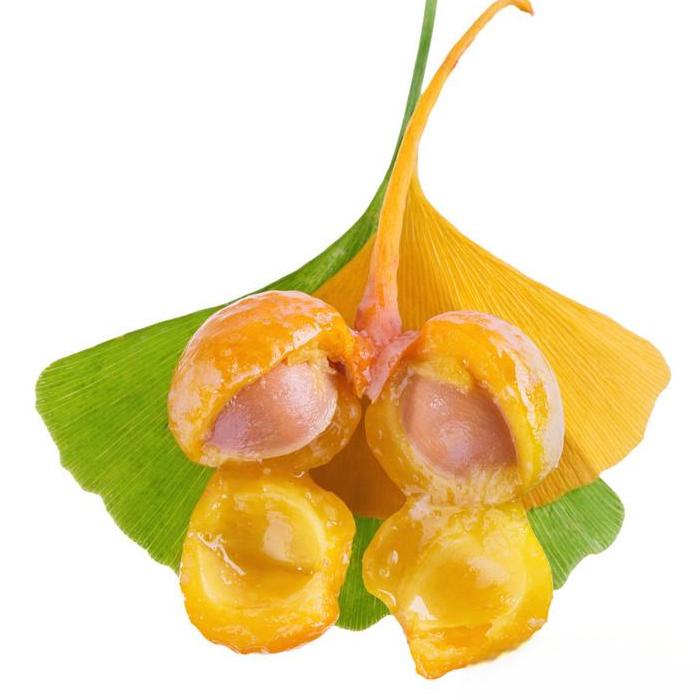
In recent years, some scholars have suggested that ginkgo biloba flavonoids have potential liver and kidney toxicity, and like the alkylphenolic acids in ginkgo biloba, they also have potential safety risks and need to be limited and controlled. However, a literature search found that the bioactivity of flavonoid compounds is higher than that of their monomers, and they have anti-inflammatory, antioxidant, anti-tumor, neuroprotective and cardiovascular protective effects, and have high medicinal value. They are not toxic ingredients in ginkgo preparations [38-41].
4.2.1 Antioxidant effect
Ginkgo biloba flavonoids have antioxidant activity, and the strength of this activity is related to the number and position of the phenolic hydroxyl groups contained in the benzene ring. The double bond and the o-dihydroxyphenolic hydroxyl group at the 2-3 position of the benzene ring are crucial for the antioxidant effect [42-44]. Therefore, ginkgo biloba flavonoids are regarded as natural antioxidants that can reduce the production and deposition of lipid peroxides, enhance the activity of superoxide dismutase, and have the effects of scavenging free radicals in the body, protecting cell membranes, and regulating the function of organ tissues [45]. Some reports [46] have shown that the antioxidant effect of ginkgo biloba bilobalide against free radicals is comparable to that of apigenin. Other studies [47] have shown that ginkgo biloba bilobalide and taxifolin can prevent oxidative damage by protecting the activity of antioxidant enzymes or inhibiting the activation of extracellular regulated protein kinases.
4.2.2 Anticoagulant and vasodilator effects
Ginkgo biloba flavonoids can inhibit platelet aggregation by antagonizing platelet-activating factor, thereby preventing thrombosis and improving microcirculation. Pan Suhua et al. [48] found that isoginkgetin can dilate blood vessels and increase blood flow, thereby reducing the formation of blood clots. Some studies [49] have found that the flavonoid components can increase the level of cyclic guanosine monophosphate (cGMP) by increasing the production of nitric oxide in vascular endothelial cells, thereby reducing the contraction of arterial blood vessels caused by phenylephrine.
4.2.3 Neuroprotective effect
Research [50] has shown that the ginkgo bilobalide component can protect against 1-methyl-4-phenylpyridinium ion (MPP+) induced cell damage by reducing intracellular levels of reactive oxygen species. It has been reported [51] that neuronal iron homeostasis is closely related to the pathogenesis of Parkinson's disease (PD). Ginkgo biloba flavonoids can strongly chelate iron ions and inhibit the increase in intracellular iron ion levels. Therefore, they are expected to have therapeutic effects on PD and related diseases such as iron metabolism disorders. Other studies [52] have found that ginkgolide is a bifunctional chelating agent that can reduce both neurotoxicity and oxidative stress, and therefore is expected to become a lead compound for the treatment of Alzheimer's disease (AD).

4.2.4 Anti-inflammatory and anti-infective effects
Studies [53-54] have shown that the bilobalide component of ginkgo has dual inhibitory properties against cyclooxygenase (COX) and lipoxygenase (LOX), thereby producing an anti-inflammatory effect with fewer adverse reactions. In addition, in terms of anti-infection, it has been reported [55] that isoginkgetin has a highly selective inhibitory effect on Staphylococcus aureus, Enterococcus faecalis, Escherichia coli, etc.
4.2.5 Antitumor effect
The antitumor mechanism of flavonoids mainly includes inhibiting the proliferation and growth of tumor cells, promoting the rapid apoptosis of tumor cells, inducing autophagy, inhibiting tumor angiogenesis, and regulating anti-cancer genes [56-58]. Ginkgo biloba flavonoids have a certain inhibitory effect on tumor cells such as ovarian cancer, breast cancer, gastric cancer, and lung cancer [59-60]. Some studies [61] have shown that the C4 ´ position on the parent nucleus of ginkgo biloba flavonoids contains a hydroxyl group, which is an important feature of its anticancer activity. If the hydroxyl group is replaced by a methoxy group, the anticancer activity is enhanced; if groups are substituted at the 5th and 7th positions of the A ring, the anticancer activity is reduced.
4.3 Risk of combined drug use
In addition to the toxic side effects and clinical adverse reactions of ginkgo preparations being related to the endogenous toxic ingredients they contain, drug interactions that occur when drugs are used in combination also need to be considered. Some studies [62] have reported that ginkgo preparations have a certain inductive effect on drug metabolizing enzymes. Ginkgolides A and B can promote the metabolic capacity of liver metabolic enzymes; flavonoids (quercetin and kaempferol) can inhibit the metabolism of nifedipine in the body, and this effect is further enhanced with an increase in flavonoid intake, which can lead to adverse reactions such as headache, dizziness, and increased heart rate. Literature [63-65] reports that ginkgo preparations should be used with caution in combination with salicylates and barbiturates, as they may cause gastrointestinal discomfort, headache, congestion, and skin allergic reactions. Ginkgo preparations taken together with anticoagulants (such as phenprocoumon, warfarin, clopidogrel, acetylsalicylic acid and other non-steroidal anti-inflammatory drugs), proton pump inhibitors (tranylcypromine, nifedipine, thiazides) or antiplatelet drugs may increase the risk of bleeding.
5 Outlook and recommendations
China is the homeland of ginkgo, and its medicinal history is long. Modern ginkgo preparations have always been best-selling proprietary Chinese medicine varieties in China, and they play an important role in the treatment of cardiovascular diseases. They have also gradually been used in the treatment of metabolic diseases, kidney diseases and other diseases [66]. Therefore, we must develop and make good use of this star variety of natural herbal medicine at home and abroad, promote the development of the domestic ginkgo industry, and enhance the international competitiveness of domestically produced ginkgo preparations. Quality is the key to survival. We must respect the classic theories and clinical practices of traditional Chinese medicine, and inject the power of modern science and technology into them. Discussing efficacy without referring to the drug ingredients and discussing toxicity without referring to the drug dosage are contrary to the scientific view of modern drug research. For the toxic side effects and adverse reactions of ginkgo preparations, we should, on the basis of fully understanding the composition of the relevant ingredients, improve research on the activity mechanism, in vivo metabolism and toxicological evaluation, and supplement clinical research data on combined drug use, long-term use and adverse reactions, so as to formulate a reasonable medication method and dosage.
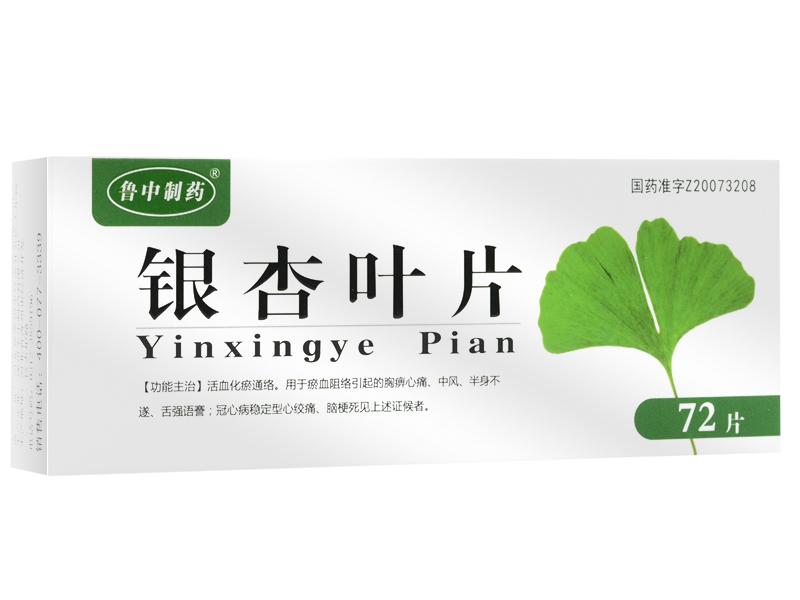
In the production of ginkgo preparations, the extraction process should be further optimized, following the traditional theory of “attenuating toxicity and enhancing efficacy” to remove harmful ingredients while increasing the effective ingredients as much as possible. At the same time, quality control methods should be improved, and modern scientific and technological achievements and new practical technologies should be used to break away from the passive situation of domestic ginkgo research and development and increase domestic independent innovation. The author's team has been continuously accumulating and deepening research on the overall quality control and evaluation of Ginkgo biloba medicinal materials, extracts and Ginkgo preparations over the past 10 years [67-74].
At present, comprehensive qualitative and quantitative characterization of the chemical constituents of Ginkgo substances has been achieved, breaking through the general outline of “flavonoids 24% + lactones 6%” that has been internationally accepted for a long time. and improved the overall quality control methods for Ginkgo biloba extracts and Ginkgo preparations. Through in-depth cooperation with the original research and development enterprise of Ginkgo preparations, the key links in the production process of the preparations were controlled, the applicability of the inspection methods and the impact of quality control on related process links were investigated, and finally a product-related quality standard system was formed. Related research results will be released successively.
With the continuous advancement of modern technology, it is hoped that a quality standard system can ultimately be established for the entire ginkgo industry chain, from planting, harvesting and processing to preparation production, quality control and clinical use, to build a technical barrier for China in the international market and comprehensively improve the quality level of domestically produced ginkgo preparations. When a complete quality system is established for domestically produced ginkgo preparations and they have core technical strength, it will be possible to further standardize and unify the domestic ginkgo enterprise industry, and gradually improve the overall quality level and international image of China's ginkgo industry.
References:
[1] Liang Lixing. Ginkgo biloba is native to eastern Asia – China, Japan and Korea [J]. Shaanxi Forestry Science and Technology, 1990 (3): 63-64.
[2] Liang Lixing. Major achievements in the research and production of Ginkgo biloba in Japan [J]. Shanxi Fruit Trees, 1991 (1): 52-53.
[3] Liang Lixing. Discussion on the classification of ginkgo species resources [J]. Chinese Wild Plant Resources, 1996 (1): 16-19.
[4] Liang Zhaohui, Liang Lixing. The origin and evolution of ginkgo [J]. Special Product Research, 2002, 24 (2): 56-57.
[5] Yang Yang, Zhou Bin, Zhao Wenjie. Historical story of Ginkgo biloba: a model for the research and development of traditional Chinese medicine/botanical medicine [J]. Chinese Herbal Medicine, 2016, 47(15): 2579-2591.
[6] Li Junyi, Cheng Li. Research overview on the development and application of Ginkgo biloba resources [J]. Chinese Herbal Medicine, 1994, 17(3): 44-46.
[7] Wei Xueli, Qu Wei, Liang Jingyu. Research progress on ginkgo [J]. Strait Pharmacy, 2013, 25(2): 1-8.
[8] Guo Ruixia, Li Zhi, Li Ligen, et al. A story of natural drug chemistry: ginkgolides [J]. Chinese Herbal Medicine, 2013, 44(6): 641-645.
[ 9 ]VAN BEEK T A , MONTORO P. Chemical analysis and quality control of Ginkgo biloba leaves,extracts,and phytopharmaceuticals [J]. J Chromatogr A,2009,1216( 11):2002-2032.
[ 10]NAKANISHI K. Terpene trilactones from Gingko biloba:from ancient times to the 21st century[J]. Bioorg Med Chem,2005,13( 17):4987- 5000.
[11] Liang Lixing. Development and utilization of ginkgo biloba and its research progress [J]. World Forestry Research, 1996 (3): 44-51.
[12] Xie Delong, Gao Qi, Huang Xinsheng, et al. Establishment of the quality standard system for Chinese ginkgo medicines and standardized practice [J]. World Science and Technology, 2002, 4 (1): 61-62.
[13] Pan Li, Wang Zhengtao, Yang Li. Key scientific issues in the research of Chinese medicine quality standards and the application prospects of related cutting-edge analytical technology [J]. Shanghai Journal of Traditional Chinese Medicine, 2020, 54(1): 14-20.
[ 14]HECKER H, JOHANNISSON R, KOCH E, et al. In vitro evaluation of the cytotoxic potential of alkyl phenols from Ginkgo biloba L[J]. Toxicology, 2002, 177(2): 167-177.
[15] Pan Suhua, Dong Lina, Gu Baiping, et al. Toxic substances that should not be ignored – ginkgolic acid [J]. Modern Drug Application in China, 2007, 1 (12): 107-108.
[16] VICTOIRE C, HAAG-BERRURIER M, LOBSTEIN-GUTH A, et al. Isolation of flavonol glycosides from Ginkgo biloba Leaves [J]. Planta Medica, 1988, 54(3): 245-247.
[17] NI Xuewen, WU Moucheng. Separation and identification of ginkgolic acid and its antibacterial activity [J]. Food Science, 2004, 25(9): 59-63.
[18] Wei Xiuli. HPLC determination of ginkgoic acid in ginkgo biloba extract [J]. Chinese Pharmaceutical Industry Journal, 2003, 34(6): 295-296.
[19] Chen Jun, Chen Cen, Ren Hong, et al. Determination of ginkgo acid content in ginkgo biloba leaves [J]. Chinese Journal of Modern Applied Pharmacy, 2018, 35(1): 72-75.
[20] Wu Xiangyang, Yang Liucheng, Chen Jun. Determination of ginkgo acid content in ginkgo biloba leaf extract and its preparations by high performance liquid chromatography [J]. Journal of Pharmaceutical Sciences, 2003, 39 (11): 846-849.
[21] Wang Qiaowei, Xie Yuanyuan, Wang Yiming, et al. Research on the determination method of ginkgolides in ginkgo biloba leaves. Chinese Journal of Pharmacy, 2015, 50 (2): 167-173.
[22] Yao Jianbiao, Fang Ling, Wang Ruwei, et al. Comparative study on the limit test methods of ginkgo acid in ginkgo leaf extract in Chinese Pharmacopoeia and European Pharmacopoeia [J]. Journal of Pharmaceutical Analysis, 2012, 32 (11): 2055-2059.
[23] Liu Pingping, Pan Suhua. Research progress on ginkgolide acid in Ginkgo biloba preparations [J]. Chinese Journal of Traditional Chinese Medicine, 2012, 37(3): 274-277.
[24] JAGGY H, KOCH E. Chemistry and biology of alkylphenols from Ginkgo biloba L [J]. Pharmazie, 1997, 52: 735-738.
[25] Liu Xin, Dang Ya, Geng Jingzhang. Research progress on the pharmacological activity and application of ginkgolic acid [J]. Western China Science and Technology, 2012, 11(2): 32-33.
[26] Yang Xiaoming, Chen Yue, Qian Zhiyu. Research progress on the biological activity of alkylphenolic acids [J]. Chinese Herbal Medicine, 2003, 34(5): 5-6.
[27] Zhao Yunkui. Research on the isolation and biological activity of ginkgolides [D]. Xi'an: Northwest A&F University, 2007.
[28] Yang Xiaoming, Qian Zhiyu, Chen Jun, et al. In vitro antitumor activity of ginkgolic acid in the outer seed coat of ginkgo [J]. Traditional Chinese Medicine Materials, 2004, 27(1): 40-42.
[29] Ni Xuewen, Wu Moucheng. Study on the antitumor activity of ginkgolides in the outer seed coat of Ginkgo biloba [J]. Journal of Huazhong Agricultural University, 2006, 25(4): 449-451.
[30]LIANG J R,YANG H. Ginkgolicacid(GA)suppresses gastric cancer growth by inducing apoptosis and suppressing STAT3/JAK2 signaling regulated by ROS[J]. Biomed Pharmacother,2020,125:1085-1095 .
[31]FLOTHO A , MELCHIOR F. Sumoylation: A regulatory protein modification in health and disease[J]. Annu Rev Biochem ,2013, 82:357-385.
[32]LIU K,WANG X,LI D,et al. Ginkgolic acid,a SUMO-1 inhibitor, inhibits the progression of oral squamous cell carcinoma by alleviating SUMOylation of SMAD4[J]. Mol Ther Oncolytics,2019,16:86-99.
[33]JACOB-SEBASTIAN S,ANNE D. SUMO and the robustness of cancer [J]. Nat Rev Cancer,2017,17(3):184-197.
[34]CHOWDHURY D,SINGH A,GUPTA A,et al. p38 MAPK pathway- dependent SUMO ylation of Elk-1 and phosphorylation of PIAS2 correlate with the downregulation of Elk-1 activity in heat-stressed HeLa cells[J]. Cell Stress Chaperones,2019,24(2):393-407.
[35] Jian Yue. Study on the extraction and separation process of flavonoids in ginkgo biloba leaf residue [D]. Beijing: Beijing Forestry University, 2019.
[36] Yang Huiping, Gao Rui. Research progress on medicinal components and pharmacological effects of ginkgo [J]. Advances in Animal Medicine, 2017, 38 (8): 96-99.
[37] Xue Y, Yuan J, Qu L. Synthesis and reaction mechanism of flavonoids [C]//Chinese Chemical Society, Changchun Institute of Applied Chemistry, Chinese Academy of Sciences. Proceedings of the 12th National Annual Conference on Applied Chemistry of the Chinese Chemical Society. Zhengzhou: Chinese Chemical Society, Changchun Institute of Applied Chemistry, Chinese Academy of Sciences, 2011: 186-187.
[38] Li B, Hu G, Hu L, et al. Extraction and determination of bilirubin components in ginkgo leaves [J]. Chinese Herbal Medicine, 2014, 45(17): 2552-2555.
[39] Ma Xiaofang, Yang Shilong, Tang Ying, et al. Research progress of ginkgo biloba flavonoids [J]. Shandong Chemical Industry, 2018, 47(23): 72-76.
[40 ]THAPA A,WOO E R,CHI E Y,et al. Biflavonoids are superior to monoflavonoids in inhibiting amyloid-β toxicity and fibrillogenesis via accumulation of nontoxic oligomer-like structures[J]. Biochemistry, 2011,50( 13):2445-2455.
[41 ]SAGRERA G ,BERTUCCI A,VAZQUEZ A,et al. Synthesis and antifungal activities of natural and synthetic biflavonoids[J]. Bioorg Med Chem,2011,19( 10):3060-3073 .
[42 ]JOYEUX M , LOBSTEIN A,ANTON R,et al.Comparative antilipoperoxidant,antinecrotic and scavenging properties of terpenes and biflavones from Ginkgo and some flavonoids[J]. Planta Med, 1995,61(2):126-129.
[43 ]KIM S. Effect of biflavones of Ginkgo biloba against UVB-induced cytotoxicity in vitro[J]. J Dermatol,2001,28(4):193-199.
[44 ]SON J,SON M,LEE E,et al. Ginkgetin,a biflavone from Ginko biloba leaves,inhibits cyclooxygenases-2 and 5-lipoxygenase in mouse bone marrow-derived mast cells[J]. Biol Pharm Bull,2005,28( 12): 2181-2184.
[45] Zhang Yuanhua, Quan Meiping. Research progress on the antioxidant effects of ginkgo biloba extract [J]. Heilongjiang Animal Husbandry and Veterinary Medicine, 2016, 22(6): 69-71.
[46 ]ZHANG Y ,SHI S ,WANG Y ,et al. Target-guided isolation and purification of antioxidants from Selaginella sinensis by offline coupling of DPPH-HPLC and HSCCC experiments[J]. J Chromatogr B,2011,879(2):191-196.
[47 ]JEONG E J,HWANG L,LEE M,et al. Neuroprotective biflavonoids of Chamaecyparis obtusa leaves against glutamate-induced oxidative stress in HT22 hippocampal cells[J]. Food Chem Toxicol,2014,64 (2):397-402.
[48] Pan Suhua, Lin Danping. Effects of isoginkgetin on platelet aggregation and fibrinogen content in rabbits [J]. Journal of Anhui University of Traditional Chinese Medicine, 1994, 13(4): 59-60.
[49 ]ZHOU G,YAO X,TANG Y,et al. Two new nonacosanetriols from Ginkgo biloba sarcotesta[J]. Chem Phys Lipids ,2012 ,165( 7): 731-736.
[50 ]DELL ’AGLI M ,GALLI G V ,BOSISIO E. Inhibition of cGMP- phosphodiesterase-5 by biflavones of Ginkgo biloba[J]. Planta Med, 2006,72(5):468-470.
[51 ]WANG Y Q,WANG M Y,FU X R,et al. Neuroprotective effects of ginkgetin against neuroinjury in Parkinson´s disease model induced by MPTP via chelating iron[J]. Free Radical Res,2015,49(9): 1069- 1080.
[52 ]SUN L,SHARMA A,HAN B,et al. Amentoflavone:A bifunctional metal chelator that controls the formation of neurotoxic soluble Aβ42 oligomers[J]. ACS Chem Neurosci,2020,11( 17):2741-2752.
[53 ]SON J K,SON M J,LEE E,et al. Ginkgetin,abiflavone from Ginko biloba leaves,inhibits cyclooxygenases-2 and 5-lipoxygenase in mouse bone marrow-derived mast cells[J].Biol Pharm Bulletin,2005,28( 12):2181-2184.
[54 ]LIM H , SON K H , CHANG H W. Effects of anti-inflammatory biflavonoid,ginkgetin,on chronic skin inflammation[J]. Biol Pharm Bulletin,2006,29(5):1046-1049.
[55 ]BAGLA V P,MCGAW L J,ELGORASHI E E,et al. Antimicrobial activity,toxicity and selectivity index of two biflavonoids and a flavone isolated from Podocarpus henkelii( Podocarpaceae)leaves[J].Bmc Complement Altern Med,2014,14( 1):383-388.
[56] Tu Qingbo, Sun Yun, Xu Ting, et al. Research progress on the pharmacological effects of ginkgo biloba flavonoids [J]. Shandong Medicine, 2018, 58(19): 112-114.
[57] Liu-ping Miao, Xin-jie Wang, Hai-feng Zhou, et al. Research on the pharmacological effects of flavonoids. World Clinical Drugs, 2012, 33(6): 369-374.
[58 ]ADNAN M ,RASUL A ,HUSSAIN G ,et al. Ginkgetin:A natural biflavone with versatile pharmacological activities[J]. Food Chem Toxicol,2020,145:1116-1142.
[59] Zhang Jinli, Qin Shengnan, Wang Pengzhen, et al. Suihua fir diadiene inhibits ovarian cancer cell migration by promoting the expression of the Ecadherin/β-catenin complex [J]. Oncology Pharmacy, 2021, 11(2): 165-169.
[60] Zhao Xuemei, Zhang Honglian, Kong Huanyu, et al. Effects of Phellodendron amurense var. japonica flavones combined with paclitaxel on the growth and apoptosis of lung cancer A549 cells [J]. Advances in Modern Biomedicine, 2015, 15(33): 6432-6434.
[61 ]SU Y,SUN C M,CHUANG H H ,et al. Studies on the cytotoxic mechanisms of ginkgetin in a human ovarian adenocarcinoma cell line [J]. Naunyn Schmiedebergs Arch Pharmacol,2000,362( 1):82-90 .
[62 ]YOU O H,KIM S H,KIM B,et al. Ginkgetin induces apoptosis via activation of caspase and inhibition of survival genes in PC-3 prostate cancer cells[J]. Bioorg Med Chem Lett,2013,23(9):2692-2695 .
[63 ]KELLERMANN A J,PHARM D,KLOFT C. Is there a risk bleeding associated with standardized Ginkgo biloba Extract therapy? A systemaic review and meta-analysis[J]. Pharmacotherapy,2011,31 (5):490-502 .
[64] Ma Shiyu, Yu Lijun, Wang Peizhen, et al. Analysis of the combination of Ginkgo Biloba Injection and other drugs [J]. Chinese Patent Medicine, 2020, 42(4): 1092-1096.
[65] Pang Xinxin, Shi Xiujie, Zhang Yage, et al. Meta-analysis of the efficacy and safety of ginkgo biloba extract for the treatment of diabetic nephropathy [J]. Shanghai Journal of Traditional Chinese Medicine, 2023, 57(1): 16-24.
[66 ]YIN O Q,TOMLINSON B,WAYE M M ,et al. Pharmacogenetics and herb-drug interactions: experience with Ginkgo biloba and omeprazole[J]. Pharmacogenetics,2004,14( 12):841-850.
[67 ]ZHAO Y Y, YIN H L, GUO R Y, et al. Study on the content of organic acid components in Ginkgo biloba extract based on multivariate statistical analysis [J]. Chinese Herbal Medicine, 2020, 51(14): 3679-3685.
[68 ]ZHAO Y Y,GUO R Y,YIN H L,et al. Comparative study on main compounds in Ginkgo biloba L. base on mathematical statistics[J]. J Chin Pharm Sci,2019,28( 12):843-854.
[69 ]ZHAO Y Y , GUO H Z , CHEN Y G, et al. Simultaneous quantification of flavonol glycosides, terpene lactones, polyphenols and carboxylic acids in Ginkgo biloba leaf extract by UPLC-QTOF-MSE based metabolomic approach [J]. J Chin Pharm Sci, 2017, 26 (11): 789-804.
[70] Zhao Yiyi, Guo Hongzhu, Fu Xintong, et al. Analysis of 25 inorganic elements in Ginkgo biloba series varieties based on ICP-MS method [J]. Chinese Herbal Medicine, 2017, 48 (10): 1991-1997.
[71] Zhao Yiyi, Wang Jinghui, Fu Xintong, et al. Determination of the content and seasonal variation analysis of 11 flavonoid glycosides in ginkgo leaves harvested during the growing season [J]. Acta Pharmaceutica Sinica, 2013, 48 (1): 98-103.
[72] Zhao Yiyi, Wang Jinghui, Fu Xintong, et al. Fingerprinting of flavonoids in Ginkgo biloba herb and quantitative analysis of 11 flavonoid glycosides [J]. Chinese Journal of Pharmacy, 2013, 48(18): 1583-1588.
[73] Zhao Yiyi, Chen Yougen, Guo Hongzhu, et al. Study on the chemical composition of flavonoid glycosides in ginkgo biloba extract for injection [J]. Chinese Herbal Medicine, 2013, 44(15): 2027-2034.
[74] Zhao Yiyi, Guo Hongzhu, Wang Jinghui, et al. Simultaneous determination of 11 flavonoid glycosides in Ginkgo biloba extract by ultra-high performance liquid chromatography [J]. Chinese Journal of Pharmacy, 2012, 47(24): 2032-2037.


 English
English French
French Spanish
Spanish Russian
Russian Korean
Korean Japanese
Japanese